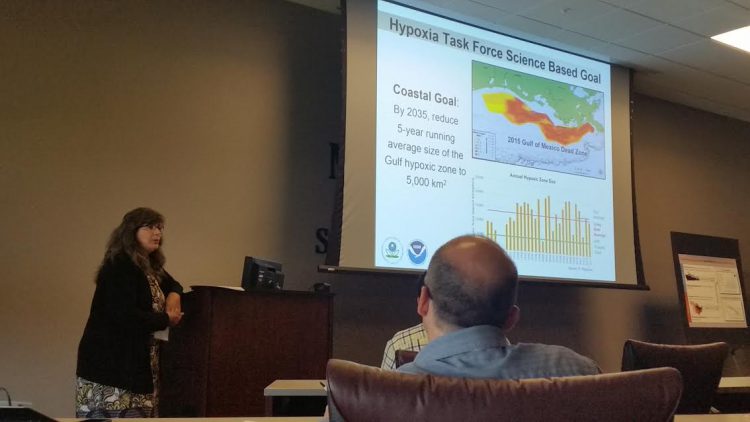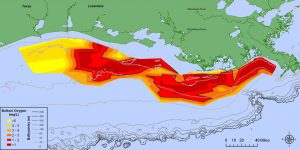Scientists, managers, and agency personnelfrom 26 stakeholder agencies and institutions met to establish a sustainable multi-partner hypoxia monitoring program in the northern Gulf of Mexico at the NCCOS sponsored 6th Annual NOAA/Northern Gulf Institute Hypoxia Research Coordination Workshop.

The 2012 Gulf of Mexico Hypoxia Monitoring Implementation Plan and subsequent workshops provided a foundation to move forward with implementation of a hypoxia monitoring program designed to meet requirements linked to key management needs. The benefits of a cooperative hypoxia monitoring program include models critical to informing management strategies that would no longer suffer severe data limitations, data accessible in real or near-real time, and the metric generated to assess progress toward the Hypoxia Task Force Coastal Goal to mitigate hypoxia would be developed in a structured, consistent, and sustainable manner.

Key-note presentations were given by Mary Erickson (Director, NCCOS), Ellen Gilinsky (EPA Office of Water and Federal Chair of Hypoxia Task Force), and Rob Magnien (Director, CSCOR). Three breakout sessions explored: (1) technical monitoring requirements to support analysis tools (primarily models) needed to develop management products; (2) overlap between related monitoring programs and hypoxia management programs; and (3) how existing management and monitoring partners can expand upon their commitments to sustain a hypoxia monitoring program.
Outputs from the workshop include: (1) a report identifying monitoring requirements and collaborations necessary to implement and sustain a Gulf of Mexico hypoxia monitoring program that includes the hypoxic zone and other Gulf ecosystem restoration issues; and (2) establishing small teams of workshop attendees to implement key elements identifies at the workshop.
For more information, contact Alan.Lewitus@noaa.gov.
